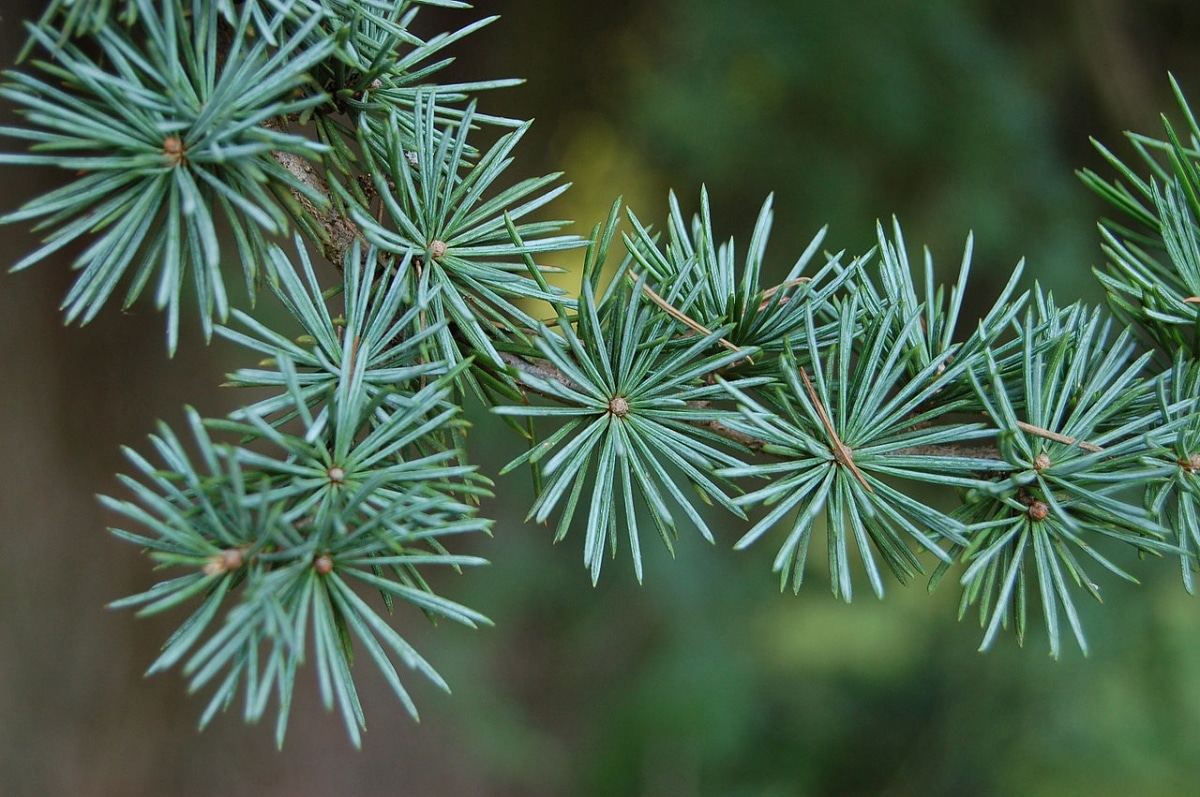
Image - Wikimedia / Derek Ramsey
El Cedrus atlantic It is an evergreen conifer that is widely used in parks and large gardens. It provides a lot of shade when it is allowed to grow on its own, so it is very interesting to have it as a solitary specimen in some corner that we are going to enjoy a lot.
Its only drawback is that it takes its time to grow; in fact, it is quite slow. But instead can live hundreds of years.
Origin and characteristics of Cedrus atlantic

Image - Wikimedia / Derek Ramsey
El Cedrus atlantic It is an evergreen tree that is popularly known as Atlas cedar, Atlantic cedar or silver cedar. It is native to the mountainous regions of Algeria and Morocco, and can reach a height of 30 to 40 meters. Its trunk can become very thick, up to two meters in diameter.
The crown tends to be pyramidal when grown alone., and from its branches sprout acicular green or bluish leaves of about 10-25 millimeters, grouped in large numbers on the brachyblasts (these are the stems from which these leaves arise). As a curiosity, it is said that when the needles are cultivated they are usually softer than those of the specimens found in nature.
As for the cones, there are female and male. The former are larger than the latter, which measure up to 9 or 10 centimeters long.
What uses is it given?
The Atlas Cedar it is mainly cultivated as an ornamental tree. Yes, it grows slowly, but it is a tree that looks great in gardens. In addition, during its youth it is possible to grow it in a pot for many, many years, if it is transplanted every so often.
Another use is that of wood. In France, for example, it is widely used for this purpose, since the wood is suitable for carpentry, furniture and sheet metal work.
How do you take care of Cedrus atlantic?
Before buying a tree, it is very important to take into account its physical characteristics, that is, the size it will reach once it is an adult, whether it has thorns or not, whether it flowers, etc., but once you know all this, you have to see if he would be able to live in our area. One of the most common mistakes is to acquire a plant without first informing about its rusticity, so we are going to avoid it by informing you now about the needs of the Atlas cedar:
Location
It is a conifer must be placed outside, in a sunny place. If you are going to plant it in the ground, it must be at a distance of at least ten meters from the pool and paved floors.
Likewise, it is also important to leave a separation of about 5 meters between a Cedrus atlantic and any other tree, since in this way both can have a good development.
Earth
- Flower pot: while it is young and therefore small, it is possible to cultivate it in a pot with universal substrate.
- Garden: it is an undemanding plant. It will grow without problems in soil rich in organic matter and well drained.
Irrigation

Image - Wikimedia / Derek Ramsey
El Cedrus atlantic It is a conifer that does not need as much water as others. In fact, in the Atlas, which is where this tree grows, they have a typically Mediterranean climate. In this region the rains are usually torrential, and almost always seasonal since they coincide with the end of summer. It can also rain in winter and spring, but not much.
Why is all this important? Because with this information we can get an idea of how resistant this tree is if it is grown in the ground. Even so, during the first year I advise watering it from time to time, about twice a week more or less during the summer, so that it takes root well. In the case of having it in a pot, you have to continue watering throughout the year.
Subscriber
It is highly recommended to pay in spring and summer. If you have it in the garden, you can use compost, green pruning debris or chopped herbs, banana or egg shells, cow manure, earthworm humus,... whatever you want.
On the contrary, if you grow it in pots, it is preferable to use fertilizers or liquid fertilizers. Follow the directions on the package so there is no risk of overdose.
Planting time
The best time to plant it in the ground is late winter, although it can also be done in spring. If you have it in a pot, you have to plant it in a larger one every four years approximately.
Multiplication
It is a tree that multiplies by seeds. These have to be sown in winter, since they need to be cold in order to germinate. Thus, you can plant them in pots with vermiculite or coconut fiber, and leave them outdoors. When spring returns and temperatures begin to rise, they will begin to germinate.
Rusticity

Image – Wikimedia/Miguel González Novo
It withstands very well frosts of up to -20ºC, as well as temperatures of up to 35ºC.
What did you think of the Cedrus atlantic? Would you like to have one in the garden?